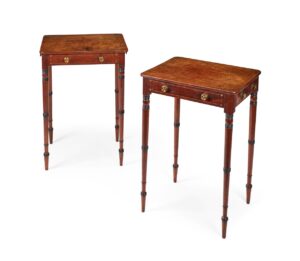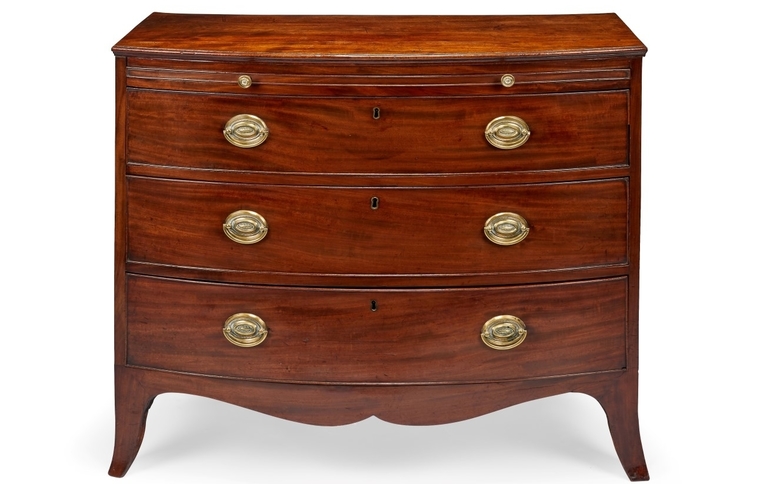Regency reigns at The Pedestal
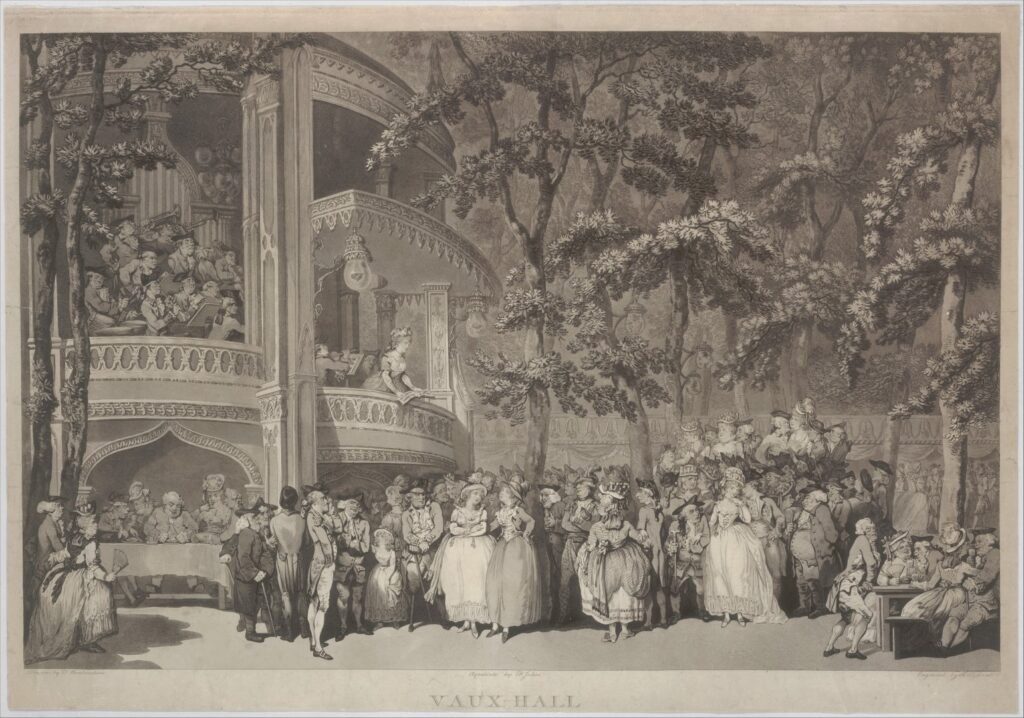
Vaux-hall pleasure gardens, Thomas Rowlandson, 1785; the satirist focuses on the fashionable spectators: Georgina, Duchess of Devonshire, stands arm in arm with her sister Lady Duncannon, whilst the Prince of Wales whispers to his mistress, Mary ‘Perdita’ Robinson
The Regency period is all the rage – Netflix’s Bridgerton is the latest vehicle for the era’s distinctive elegance and sublime refinement, although without the social, economic and political developments which also characterised these years.
Officially the Regency ran from 1811-1820, but Regency style itself endured and extended further. A notice outside the Regency galleries within the National Portrait Gallery in London states that ‘…the Regency spanned the four decades from the start of the French Revolution in 1789 to the passing of Britain’s great Reform Act in 1832’. Others have dated the start of the Regency to 1783, the year when the future Regent turned 21 and was able to live more freely and extravagantly, in contrast to the somewhat ascetic lifestyle of his father. Certainly the image of George IV as a handsome young man embodies Regency, whereas by 1811 his profligate habits had made him increasingly unpopular, and over time he became progressively more reclusive.
In keeping with the demand for designs from the Regency age the recent auction of Fine Interiors saw many bidders and buyers gravitate to the sale’s striking selection of covetable Regency furniture.

Regency satinwood and tulipwood crossbanded drum top table | Property from a Berkshire Residence – Part Two | Sold for £3,125
The what-not takes its cue from the French étagère and the form was extremely popular in England for the first three quarters of the 19th century, it is so named for its capacity to hold china, ornaments, trifles and the like. This example is in rosewood, one of the more exotic woods favoured during this period. Another graceful lot, this pair of mahogany and ebonised occasional tables, showing below, are inlaid with boxwood line and dot marquetry, on delicate ring turned tapering legs. Mahogany continued to be the dominant wood for furniture making during this time – its durability, beauty and colour proving hard to beat.
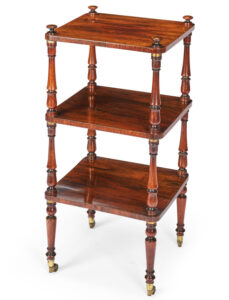
Small Regency rosewood three-tier what-not | Property from a Berkshire Residence – Part Two | Sold for £1,750
The set of quartetto tables in amboyna, thuya, maple and rosewood can be attributed to Gillows. A related set of quartetto tables are to be found in the collection at Leighton Hall, Lancashire and these are thought to have been supplied by Gillows. Furthermore, a set of tables identical to these in the auction, with the addition of a trough to the smallest table in the set, were part of a group of furnishings supplied to William Senhouse, in the West Indies, by Gillows. William Senhouse (1741-1800) served as a midshipman in the Royal Navy from 1755-1769 and in 1770 was appointed surveyor-general of customs in Barbados, the Windward and Leeward Islands; he continued in this role until 1787 when the office was abolished.

Set of Regency amboyna, thuya, maple and rosewood banded quartetto tables attributed to Gillows | Sold for £2,500
Gillows is also linked to the set of ten mahogany dining chairs from Mawley Hall, Salop, Shropshire, home of the Blount family – their wealth came from coal and iron. Mawley Hall is thought to have been built around 1730 by Francis Smith of Warwick (1672-1738) for Sir Edward Blount (d. 1757). By 1771 the Hall was inhabited by his grandson, Sir Walter Blount, and contemporary accounts indicate that the house was lavishly furnished with ‘ a thousand knick-knacks from abroad…’. Gillows Estimate Sketch Books, 1784-1800, contain several references to the Blount family.

Set of ten Regency mahogany dining chairs attributed to Gillows | Provenance: The Blount family of Mawley Hall, Salop, Shropshire | Sold for £11,250
Furniture of the Regency era tended to be smaller in size – the tall shelves, cabinets and chests of the past shrank in height to allow decorators to adorn walls with paintings. More display space was made available with furniture of a lower height, perfect for showing off curios and treasures. The mahogany bowfront chest is a little under a metre high, and sits on slender outswept bracket feet.
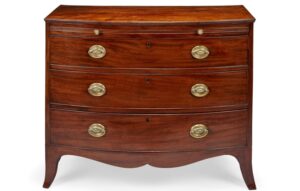
Regency mahogany bowfront chest | Property from a Berkshire Residence – Part Two | Sold for £2,375
As the Regency period evolved delicate designs were superseded by heavier, larger pieces. Lighter coloured woods such as satinwood, used here in the two-tier buffet and the crossbanded drum top table, showing above, tended to mitigate the scale and proportion of such items which became popular in the second and third decades of the 19th century. Ebony bands and ebonising also feature, both distinctive decorative elements seen in Regency furniture.

Regency satinwood two-tier buffet | Property from a Berkshire Residence – Part Two | Sold for £4,375
The Regency scroll-shaped arm works well with the reclined padded backs in the pair of mahogany library open armchairs. The turned paterae provide another nod to the influence of classical antiquity in the motifs deployed at this time. Upholstered in warm ‘ox-blood’ leather, the padded seats are incredibly inviting – perfect for prolonged perusing.

Matched pair of Regency mahogany library open armchairs | Sold for £2,125
The Pedestal’s next auction of Fine Interiors will be held on Tuesday, 20th July 2021 | www.thepedestal.com
